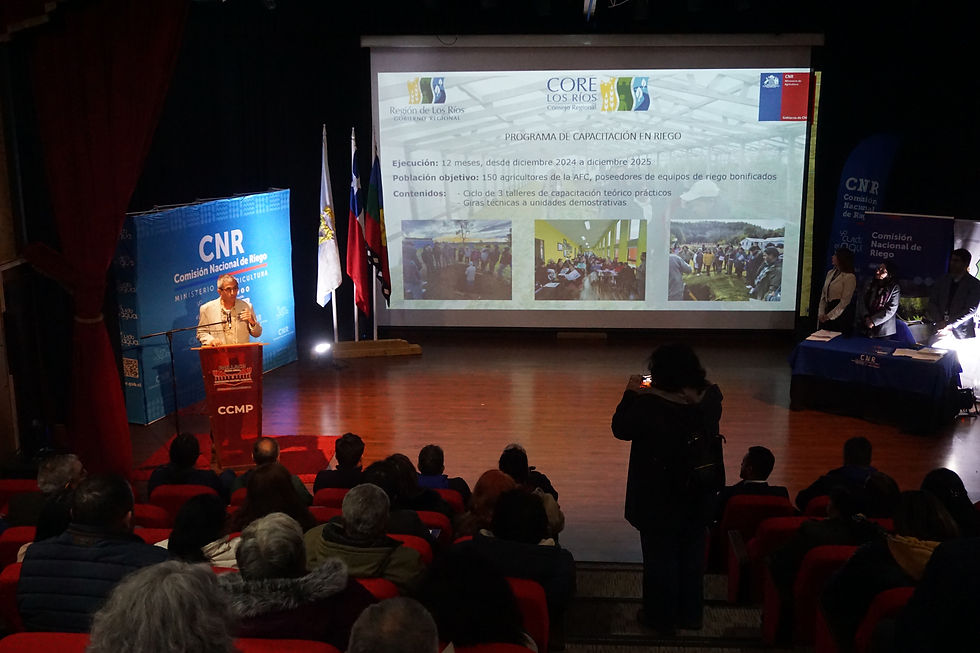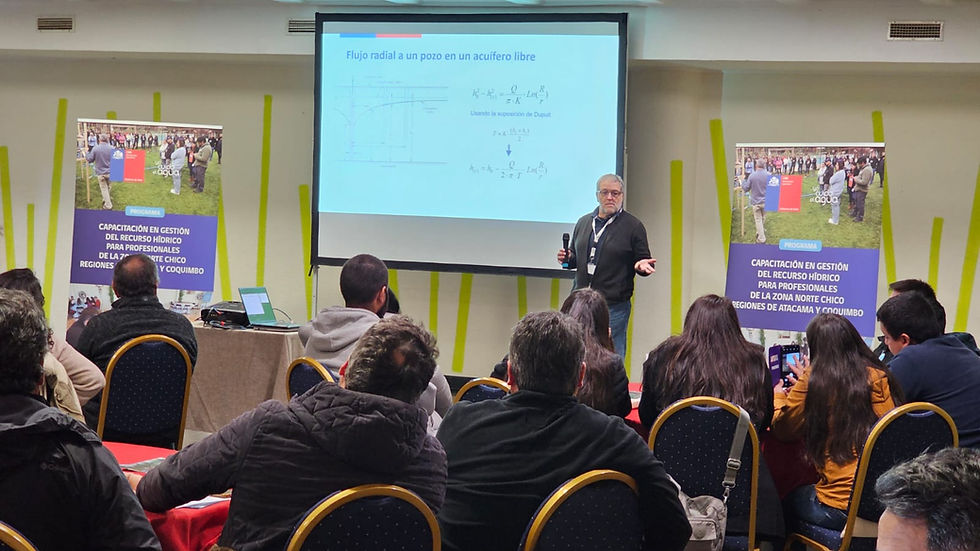IrriScan: Chilean platform obtains patent to optimize agricultural irrigation
- Gabriela Marilicán
- Aug 11
- 3 min read
The tool developed by researchers at the University of Concepción and the Water Technology Consortium allows for the diagnosis of faults in irrigation systems, the automation of their operation, and the prevention of water efficiency losses. The system already has one company interested.

An innovative platform to promote more sustainable water resource management has been granted a patent by Chile's National Institute of Industrial Property (INAPI). Researchers Christian Correa and Nicolás Gutiérrez, from the University of Concepción and researchers associated with the Water Technology Consortium (COTH2O), worked for four years on the development of this project, whose first results were obtained two years later.
The platform, called IrriScan (from “irrigation” and “scan”), is a system that incorporates several key components to improve water efficiency and identify the causes of decreases, in order to offer specific recommendations for achieving optimal levels.
“One of the major barriers to better water use in agriculture is that no one measures how irrigation is working while it is in progress. Without real-time information, it is very difficult to make good decisions,” says Christian Correa, an agricultural civil engineer with a PhD in robotics applied to agriculture.
Christian explains that the idea for the project arose from the observation that drip irrigation systems have a design efficiency of between 90 and 95%, but that once in operation, this efficiency begins to decline. He points out, “For example, efficiency decreases because the drippers start to clog, either because the water is not properly filtered or because of the growth of bacteria, microalgae, or even a biofilm that coats the drippers.”
Technology that automates and prevents failures
The objective of IrriScan is to automate the irrigation diagnosis and monitoring system through a web or mobile platform that manages and displays irrigation operating parameters, such as flow rate, pressure, volume of water applied, irrigation uniformity, and water availability for crops.
To do so, the system integrates a network of wireless sensors designed to measure pressure, dripper flow, analyze water quality, and determine soil moisture.
The data collected through these sensors is sent to a platform where it is processed automatically and in real time, generating reports and interpretations that allow the operational status and efficiency of the irrigation system to be evaluated. In addition, the platform is capable of functioning preventively to determine in the near future whether there is a high probability of obstruction due to poor practices.
“We have developed a system capable of diagnosing operating conditions, generating recommendations for improvement, and issuing preventive alerts for potential failures, both in the short and long term,” said the agricultural civil engineer.
IrriScan represents a significant advance, as it replaces or supports the specialist who currently performs manual measurements and interpretations in the field, providing irrigation recommendations directly to the farmer in an automated manner.
Technology transfer
With the patent application granted and the platform's progress, a company dedicated to the sale of chemical products for cleaning drippers showed interest in the technology, which will allow them to demonstrate, with data, the effect of their products on increasing irrigation efficiency.
“That is precisely what we transfer to the company: not only the technology developed, but also our specialized knowledge and the necessary support during the adoption phase. This process is key to ensuring that the technology is effectively integrated into the market, while fulfilling the university's mission of transferring knowledge to society and generating impact in various productive sectors,” says Christian.
“Fortunately, we have obtained the patent and have a company interested in licensing the technology, that is, in adopting and commercially exploiting it,” Christian points out.
IrriScan is currently preparing a transfer dossier that will allow experts in the field to replicate the technology. He added, “This includes mechanical and electronic plans, source code and diagrams, maintenance, operation, and repair manuals—in other words, everything necessary for someone to replicate and adopt the technology.”
Christian emphasizes that it has been a long and demanding journey to reach this point. Research, identifying the sector's needs, and developing technological solutions takes years, but today the results are beginning to show. “That's what's really rewarding: completing the journey that one, as a researcher, must take. From the initial idea, through development, to obtaining a patent and technology transfer,” Correa reflects.
“We have completed the entire cycle: from basic and applied science, through R&D&I, to obtaining a patent. That is the path that turns knowledge into impact,” Christian Correa proudly points out.
The IrriScan system technical data sheet is available on the Water Technology Consortium website at www.coth2o.cl, in the Knowledge Bank section.



Comments